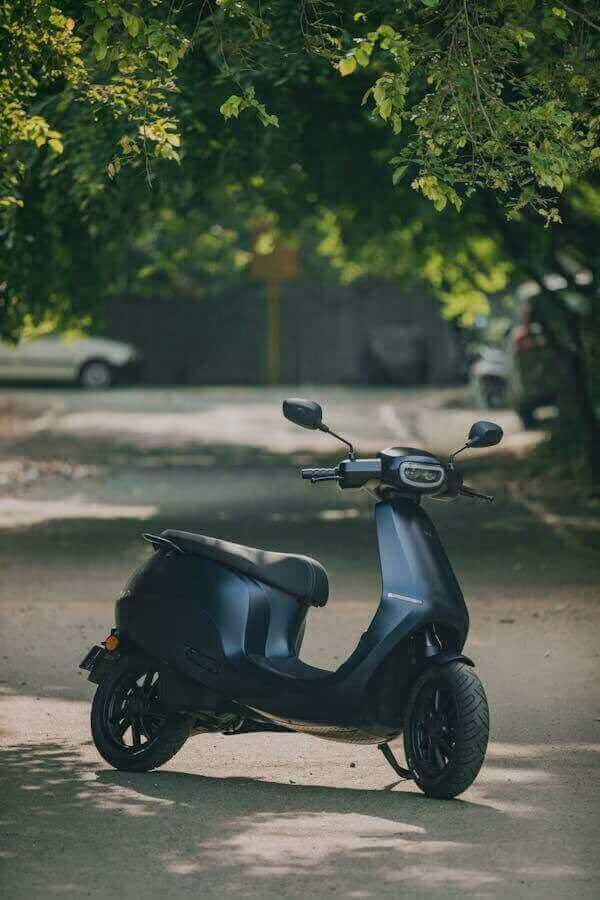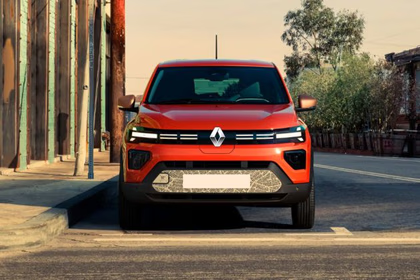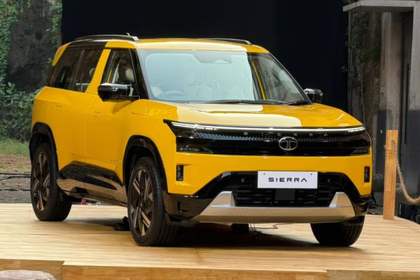Introduction
India is in the midst of a silent but significant revolution on its roads, and at the epicenter of it is the emergence of electric scooters. Amidst growing fuel prices, mounting environmental concerns, and strong government incentives, Indian customers are increasingly adopting electric vehicles (EVs), particularly in the two-wheeler category. What was once perceived as experimental or niche, electric scooters are now making inroads into the daily commute.
While Ather has established itself as a performance- and engineering-focused brand, Ola has emphasized scale, affordability, and innovation with remarkable speed. Both deliver a unique philosophy and product portfolio to the mix, albeit serving modestly different markets, but both have significant roles to play in defining the future of urban mobility.
Ather Energy
- Tarun Mehta and Swapnil Jain founded Ather Energy in 2013 to transform urban mobility through intelligent and sustainable electric vehicles; Ather has established a strong position in the Indian EV space.
- The brand’s essence is about being performance-focused and tech-driven. From a touchscreen display with real-time navigation and OTA software updates.
- Ather has been methodical in its growth, rolling out service networks and Ather Grid charging stations simultaneously with the product’s availability. The outcome is a company with a highly loyal user base that is frequently regarded as a benchmark for quality and performance in the Indian electric vehicle segment.
Ola Electric
- Ola Electric’s entry into the electric two-wheeler space was huge in terms of ambition and speed. A spinoff of ride-hailing monolith Ola, the firm announced in 2020 and went on to construct one of the world’s largest two-wheeler factories — the Ola FutureFactory — in Tamil Nadu. At the helm is Bhavish Aggarwal, whose entry into the segment shook it up with price aggression, direct-to-consumer sales, and fast innovation cycles.
- Its product lineup consists of the Ola S1 Air, S1 Pro, and S1 X — all designed for varying price segments and user requirements. It comes with a large touchscreen, voice commands, variable riding modes, and smartphone connectivity.
- Ola’s strategy is mass market-oriented, reaching a broad base with affordability and glitzy tech. Whereas Ather scaled slowly and gradually, Ola adopted a blitz scaling approach, expanding across several cities simultaneously and vowing to democratize electric mobility in urban and semi-urban India.

Performance & Ride Quality
Acceleration and Top Speed
- Ather scooters, especially the 450X, are renowned for their aggressive acceleration. The Ather 450X Gen 3 develops 6.4 kW of maximum power, with a top speed of 90 km/h. It provides a snappy, near-sportbike-like torque delivery, especially in “Warp Mode,” which is designed for rapid take-offs and fleeting bursts of speed — perfect for city commuters who require power on demand.
Urban vs. Highway Performance
- Ather’s instant torque and smaller size make a ride joyful even in traffic and crowded places. The braking system, combined with regenerative braking, makes it superior in stop-and-go conditions.
- Ola, better suited for higher top speeds and a smoother ride, performs better on highways and open roads, where there is greater scope to utilize the additional speed and comfort. Its “Hyper Mode” performance makes it a good bet for those who want to combine city rides with the occasional highway run.
Battery & Range
Claimed vs. Real-World Range
- Ather’s 450X Gen 3 boasts a certified range of 146 km and a real range of 105–110 km in Ride mode under normal urban usage. In actual use, particularly a mix of riding with heavy acceleration, regenerative braking, and the occasional Warp Mode, typical users achieve 90–100 km per charge, which is reasonably consistent with Ather’s candor in listing practical figures in their marketing.
- Ola, on the other hand, has some of the segment’s highest claimed ranges. The Ola S1 Pro has a claimed range of up to 195 km and a real-world range of approximately 120–135 km in Normal Mode. Even the lower-priced S1 Air and S1 X+ achieve usable ranges of 85–125 km, depending on the model and mode used. Ola encourages the maximum range possible, but actual reviews indicate that its results are essentially attainable in Eco or Normal modes, with sportier modes reducing the effective range.
Battery Capacity and Charging Time
- The Ather 450X features a 3.7 kWh lithium-ion battery, while the 450S comes with a lower 2.9 kWh pack. Charging from 0 to 80% would take approximately 4 hours and 30 minutes, and a complete charge could take as long as 5 hours and 40 minutes with the standard home charger.
- The Ola S1 Pro Gen 2 is equipped with a 4 kWh battery, giving it more capacity than Ather’s flagship model. Charging the S1 Pro takes approximately 6.5 hours using a standard charger. The mid-range Ola S1 Air and S1 X have lower-capacity 3 kWh and 2 kWh batteries, which reduce charge times proportionally to approximately 4.5–5 hours, depending on the model and charger type.
Fast Charging and Home Charging Solutions
- Ather has a massive advantage in charging infrastructure, as well, with its own Ather Grid fast-charging system located in more than 130 cities. Customers can recharge the battery at a rate of 1.5 km per minute, which gives a range of about 15–20 km with a mere 10-minute halt. Another Grid charging point is also complimentary for customers for a specific period after purchase.
- Ola, although late to the game when it comes to charging, is developing its own Hypercharger network. Although still in its infancy relative to Ather’s grid, Ola guarantees rapid charging capability. She has begun phasing out its portable, fast chargers and wall chargers that can be used at home. However, so far, Ola’s public charging infrastructure is not as pervasive or reliable.
Features & Technology
- Ather’s scooters are also equipped with a 7-inch color touchscreen dashboard powered by a Snapdragon processor and a custom-developed Android-based operating system. It also includes turn-by-turn Google Maps navigation, real-time ride metrics, auto-brightness, and a clean but effective user interface.
- Ola’s S1 Pro and S1 Air variants feature a larger 7-inch touchscreen, supporting Ola’s MoveOS operating system. It features full-map navigation, Bluetooth music playback, call and SMS notifications, multiple themes, and even personalized riding profiles. The look is visually rich and constantly changing, yet some users occasionally experience lag or inconsistency in responsiveness.
Pricing & Variants
The Indian two-wheeler market is dominated by one of the most critical drivers: prices. Both Ather Energy and Ola Electric have designed their product lines to attract a broad range of buyers.
Price Range of Different Models:
Ather Energy:
- Ather 450S: Rs. 1.30 – Rs. 1.35 lakh
- Ather 450X (2.9 kWh): Rs. 1.38 – Rs. 1.45 lakh
Ola Electric:
- Ola S1 X (2 kWh): Rs. 79,999
- Ola S1 X (3 kWh): Rs. 89,999
- Ola S1 Air: Rs. 1.05 lakh
- Ola S1 Pro (Gen 2): Rs. 1.30 lakh.
Ather Energy is pricier but offers better build quality, a well-developed software experience, and access to Ather Grid fast charging, which leads to long-term value and dependability. Customers are investing in refinement, customer service, and consistent performance.
Who Wins the Race?
Having compared the two in great detail across key factors—ranging from performance and battery life to design, price, and ownership experience—it becomes evident that both Ather Energy and Ola Electric present attractive offerings to India’s electric scooter market. The choice ultimately hinges, however, on the buyer’s priorities and lifestyle.
Best Choice for Performance Enthusiasts
For commuters who demand snappy acceleration, high-end ride dynamics, and a nicely engineered experience, the Ather 450X is the best option. It is lightweight handling, stable software, and silky-smooth hardware that make it the favored pick of those who desire a scooter that responds like a precision tool on urban streets.
Conclusion
The Indian electric two-wheeler market is undergoing a rapid transformation. Ather Energy and Ola Electric are two of the most significant contenders driving this shift. Their competition not only indicates contrasting strategies to electric mobility but also represents the larger Indian consumer choices between performance accuracy and mass-market innovation.
Ather Energy is the “engineered excellence” flank of the electric vehicle (EV) space. Long-term reliability, software robustness, build quality, and rider-focused performance are Ather’s priorities, which appeal to riders who crave refinement and a high-quality ownership experience. Its mature portfolio, community engagement, and consistent after-sales services signal a brand that’s taking the long view—slow, steady, and deliberate.
Ola’s hang-up is only to push the boundaries—be it long battery range, AI-powered interfaces, or new distribution models. Although the company has struggled with service quality and software glitches, its learning curve is steep, and improvements are made with each iteration. In the long run, the two companies will likely coexist with their own distinct identities. Ather can continue to rule the high-end, performance-sensitive space, winning the hearts of customers who desire a durable, elegant product with excellent backup support.
FAQs
1. Which electric scooter is best for city commuting—Ola or Ather?
For urban commuters, Electric proofers improved *rage-to-price ratio** d is ideal for daily commutes at an economical price. Yet, Ather provides a smoother ride and improved handling, particularly in stop-and-go traffic, which is best suited for performance-oriented urban commuters.
2. How are Ather and Ola differentiated in terms of the time required to charge the battery?
Ather scooters charge significantly faster with the Ather Grid fast-charging network, allowing for a range of up to 1.5 km per minute. Ola’s S1 Pro, which features a larger battery, takes longer to charge (approximately 6.5 hours using a home charger), although fast charging is being rolled out in stages.
3. Which company provides better service and support?
Ather Energy currently boasts a more robust and organized after-sales network, resulting in improved customer satisfaction. Ola Electric is growing fast but has received uneven feedback on service quality and support responsiveness.
4. Does each scooter feature over-the-air (OTA) software updates?
Yes, both companies provide OTA updates. Ather’s updates focus more on stability and polish, whereas Ola’s MoveOS updates introduce new features, including moods, music, and voice commands. Still, Ather’s updates tend to be more stable and predictable.
5. Which scooter has better resale value?
Ather scooters are more likely to retain their value better due to their superior build quality and dedicated user base. Ola scooters, although less expensive to buy, can depreciate faster due to greater market saturation and frequent model refreshes.





